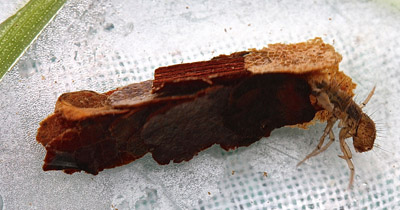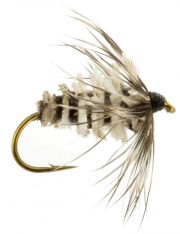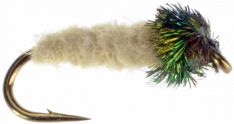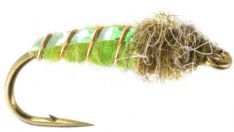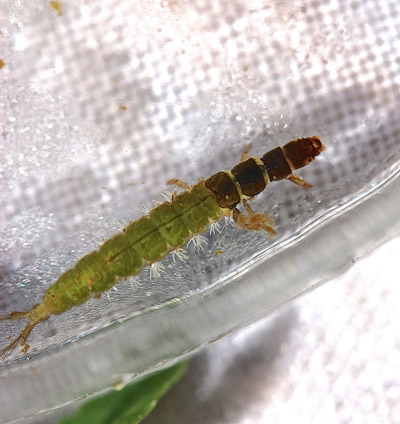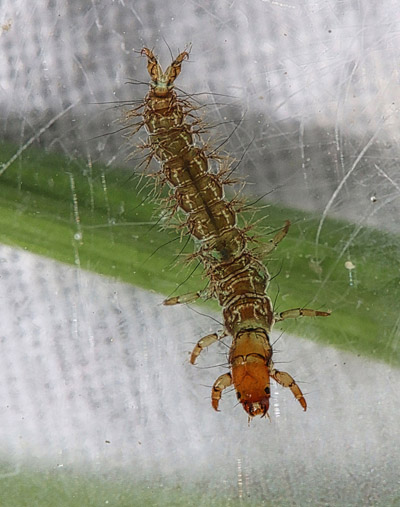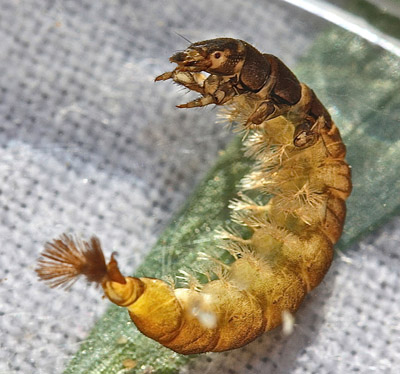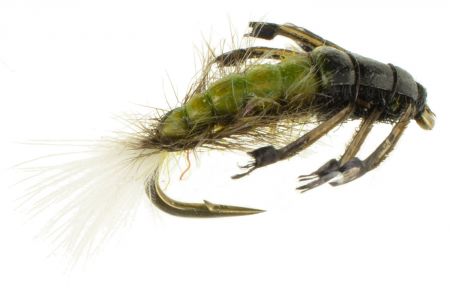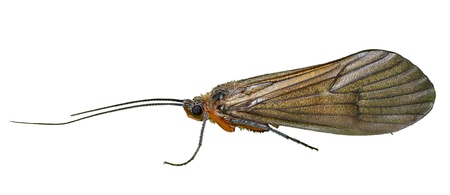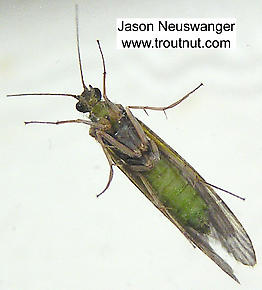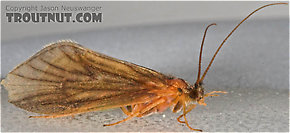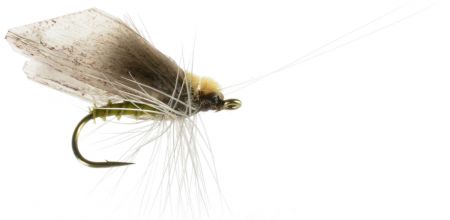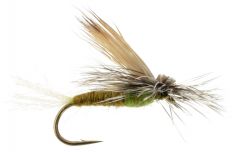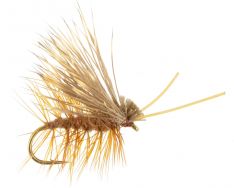Caddis Fly (Caddisfly) Entomology.
What is the Caddis Hatch? Entomology of Caddis (Order Trichoptera).
by Mike R • April 23, 2019 in Fly Hatches
Caddis - Insect Order Trichoptera
While there are more than a thousand species of Caddisflies, they are one of the easier insects to understand and imitate their hatching behavior. When an insect species hatches in concentration, trout become maddeningly selective, feeding on only one color, size, and stage of the insect. Most species of caddis emerge (hatch) intermittently through the day or night, with multiple species (and therefore, color & size) hatching each day. This generally keeps trout from becoming super selective on just one size, color or stage of an insect hatch, and they become opportunistic feeders. In other words, if you don’t see a definite hatch taking place, try a caddis searching pattern! ...and if you see a blizzard of caddis, match the hatch!
Larva: Caddis larva are divided into “Case building” and “Free living”.
Case building larva construct a case around themselves made from sand, leaves, grass,…anything they can find in the river, held together with silk and body secretions. Not surprisingly, they blend with their surroundings, because they are composed of their surroundings! While case building caddis larva are eaten by trout, they are not on the top of the trouts preferred menu items. Imagine a delicious hamburger with a bun made of sand, and you can understand a trouts preference! Occasionally, cased caddis larva abandon their case, drift down river, and establish a new residence. This behavior is called “biological drift”, which ensures that the species population is well distributed in the river. During drift, cased caddis are a more appealing meal for trout.
Free Living caddis larva are segmented, worm (grub) like insects, unable to swim. Some species simply spend their immature life crawling under rocks in search for food. Others, the net spinners, usually live in a rock crevice, and spin a net, which they use to trap and eat microorganisms. Free living caddis also undergo biological drift, often at dawn and dusk. Watch the clock, and fish a caddis larva at these times.
When you arrive to a river, observe the insect life under some rocks to determine the size and color of caddis larva present. (Larva range in color from cream, tan, green and orange) Weight your tippet so that the matching fly imitation will roll along the bottom of the river. Be prepared to lose some flies and to catch some fish with a deeply dead drifted caddis larva.
See All Caddis Larva
Pupa: Caddis larva eventually seal off their case or build a case, and over the next few weeks, transform into a caddis pupa (a lot like a caterpillar undergoing metamorphosis into a butterfly). A few caddis species crawl onto land to hatch, but most species ascend using their legs for propulsion, along with the assistance of trapped gases.
Rising pupa are at the top of a trouts preferred menu. Imitate this part of the caddis life cycle by casting upstream, and then allow the fly to sink and dead drift until the fly is directly across the river. Lift the rod, which will apply tension to the line, which, in turn, causes the pupa to rise back to the surface. (This technique is called the Leisenring Lift, after Jim Leisenring) The rising fly is irresistible to trout, and just what they are accustomed to seeing from an emerging caddis pupa.
Once the pupa breaks the surface film, it either A) drifts down the river as it sheds its pupal skin, and flies off, or B) swims across the water to the shore. To imitate the caddis as it sheds its pupal skin, use an imitation with a trailing shuck, dead drifted down the river. Often, these emergers fail to exit the pupal skin, becoming cripples, and become an easy meal that trout will target. The X-Caddis is a popular pattern for these caddis. Swimmers can be imitated by a high floating caddis, skittered toward shore. (recall, that is the direction the naturals are headed). Vary the speed that you skitter the fly. Some caddis are faster than others.
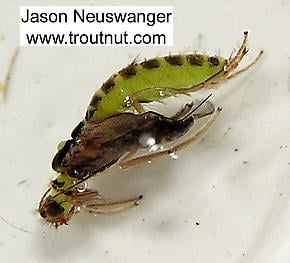 | 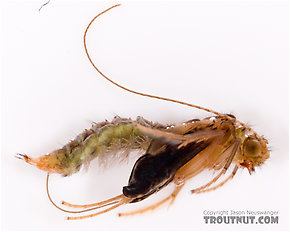 | 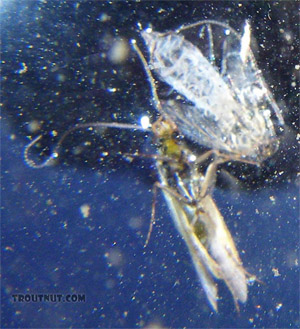 |
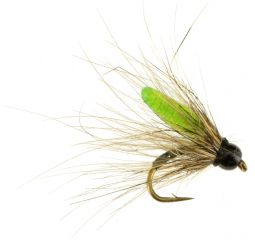 | 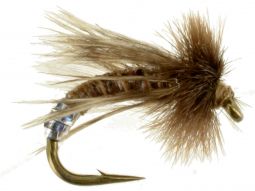 | 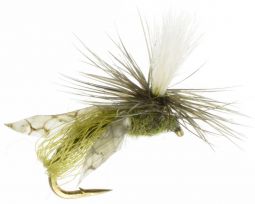 |
See All Caddis Pupa Emergers
Adult Caddis: Adults are generally unavailable as trout food until females return to lay eggs, and when the adult dies. These insects take up residence in a nearby bush, live up to 4 weeks, and often mate and lay eggs multiple times. When you arrive to a river, shake a branch of a bush next to the river. Note the size and color of caddis that fly off. That is what you want to imitate as an adult. Females return to the water where they skitter across the top, dropping eggs, or submerge where they deposit eggs. While a dead drift might work, the best way to imitate this active insect is to skitter the caddis imitation across the surface, moving the fly down stream, upstream or sideways. Fish will let you know their preference here!
See All Adult Caddis Flies


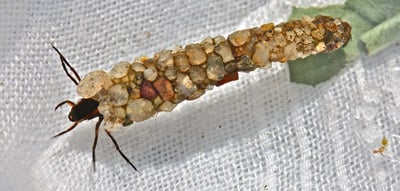
,-Apatania-incerta-(bottom)-bob-hendricks_1555954435.jpg)
